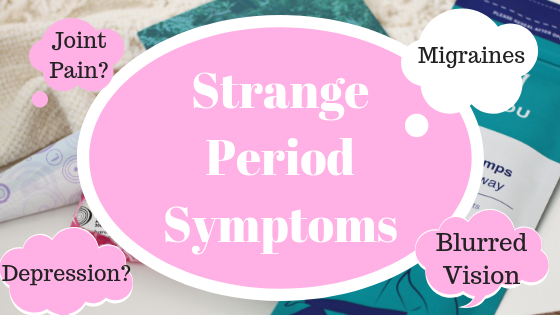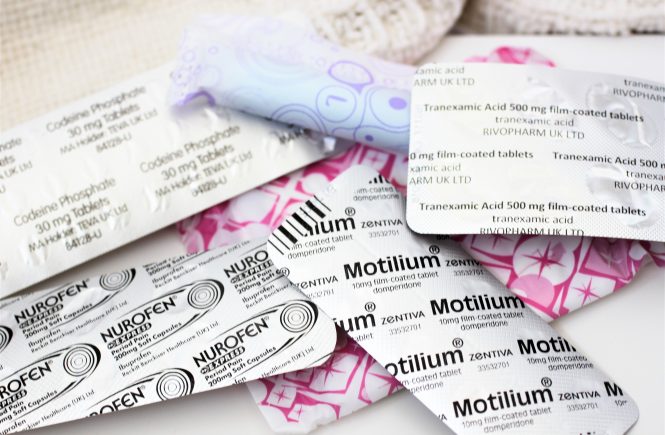I have very vivid memories of the first time I experienced ovulation bleeding; I didn’t have a clue what it was. There was definitely blood, it definitely wasn’t a period and I was confused. Oh, and I was 21 and I’d never even heard of ovulation bleeding before. Since then, I’ve probably experienced it once every two or three cycles and still wouldn’t know anything about it if I hadn’t looked it up myself.
My menstrual cycle had caused me a lot of problems at this point. I’d done my fair share of research into things like endometriosis and PCOS so I could have questions prepared for my doctors when I saw them, but I’d never once discovered ovulation bleeding. I didn’t know it existed. After Googling ‘mid-cycle bleeding’ several times, knowing fine well I wasn’t having an early period, dismissing the prospect of ovarian cancer and knowing I wasn’t having a miscarriage, there it was. Apparently, it’s common yet I’d never heard it mentioned once. By common, I mean a lot of women experience it at least once in their lives, not that many get it regularly.
Side note: please Google things with a reasonably level head. Try not to assume you’re dying when it tells you everything serious it could be before giving you a rational option.
What Is Ovulation Bleeding?
Assuming you’ve already figured out the very simple fact that it’s bleeding when you ovulate, here’s a few basics. Ovulation can be painful, like a dull ache on one side or a sharp twinge, and it’s not quite clear why.
According to the NHS, it’s thought that ovulation bleeding occurs when the egg breaks through the ovarian wall. A small amount of fluid is usually released and sometimes there’s blood too.
Only around 3% of women experience regular ovulation bleeding, but it’s thought that could be higher as the spotting can go unnoticed. Ovulation bleeding usually lasts 24-48 hours, but the fertile window itself is 3-5 days so there could be traces of blood for slightly longer.
Ovulation occurs two weeks before your period, if you’re getting pain and bleeding at other times in your cycle this could be a sign of another issue and you should consult your doctor. Likewise, if ovulation is incredibly painful or the bleeding is heavy, this could also be the sign of another medical issue.
How did you know it wasn’t a period?
There are a few answers to this. It mainly comes from knowing my cycle very well, knowing what’s normal for me and what isn’t, but there are a few differences. Ovulation blood doesn’t look like period blood. Maybe skip this paragraph if you don’t want details. Typically, ovulation blood is either a pinkish colour or deeper brownish red colour. I know they’re very different shades, but you know the colour of your blood at the end of a period? It’s either that colour, like old ‘leftover’ blood or a fresh pinkish shade.
As someone with heavy periods, I also knew because the amount was very different. Some women will get a tiny spot or two that they may not even notice. Most women experiencing ovulation bleeding get spotting that’s visible, but still not very much blood. And a few not so lucky individuals get a very light bleed. For reference, I wear a liner when I ovulate. There’s too much blood to wear nothing, but there isn’t enough to warrant a pad or tampon.
Why didn’t I know about this?
That’s a very good question, and I wish I knew the answer. I recently did a collaborative post where I talked about indicators that you might be ovulating. In that post, I listed ovulation bleeding/ spotting and was told I couldn’t include it as it wasn’t a common thing. I tried to defend my reasoning for wanting to include it, but they said no.
Throughout this back and forth I remembered the amount of Googling I had to do a few years ago to figure out why I was suddenly bleeding and couldn’t help but feel like I was letting my prior self down. I know 3% isn’t a huge amount, think about that 3% across the entire female population. That’s a lot of people. And I know I can’t have been the only one who didn’t know anything about it. If I couldn’t mention it as a bullet point in one post, the only solution was to give an entire dedicated post.
When I mentioned it to my friends or asked people in my life if they’d ever had it, everyone either said no or not that they were aware of. None of them knew it happened, and some of them thought ovulation bleeding was a clear symptom of something wrong and it never occurs without other problems. All of these women were my age or older, most of them had also had issues that resulted in them seeing a gynecologist at some point, some had already had children. And not a single person knew about it. Isn’t the education we receive about our own bodies excellent?
Elsewhere in the media…
Likewise, I don’t know about you, but I’ve seen a lot of YouTube ads for Always liners lately. All of the videos include a girl, usually with her mum, talking about how and why you could/ should use these liners. I’m yet to see one that mentions spotting. It could be that they don’t know about it, it could be that they don’t think to mention it because you wouldn’t need one daily for that. Or maybe they’re not allowed to mention that. I don’t know, and I don’t want to speculate why. But I know that’s why I have a pack of those very liners in my drawers. And I think that deserves a mention.
It seems to me yet another taboo subject for some inexplicable reason. I hope that this post reaches at least one person who’s spotting and doesn’t know why. Or maybe reaches someone who may experience it in the future so they don’t have to panic.
Have you ever experienced ovulation bleeding? Did you even know it exists?
Until next time,
Sophie
Read my last post here.




